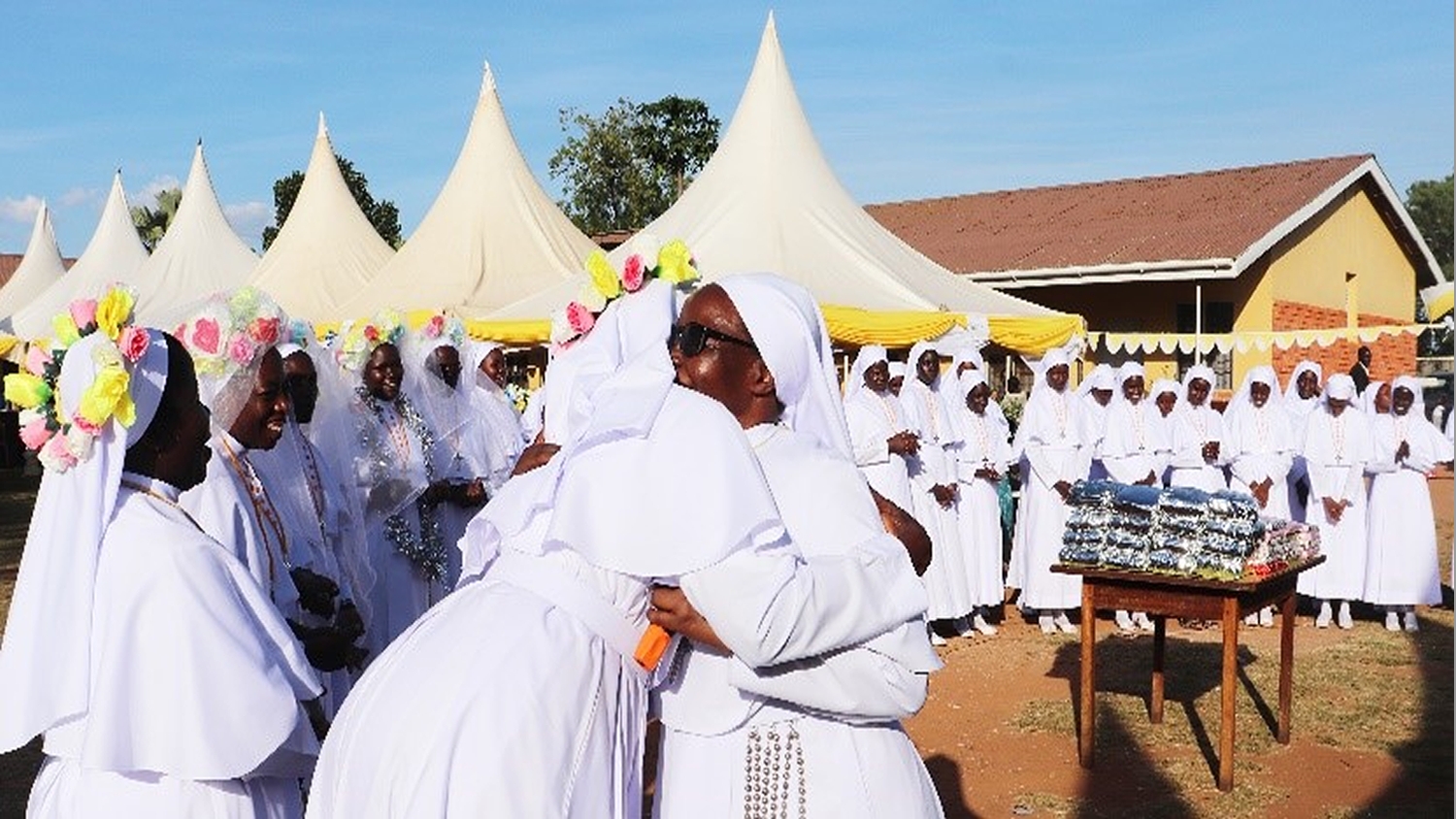The New Wine in New Wineskins (N.NW) is a Document published by the Congregation or Dycastery of Institutes of Consecrated Life and Societies of Apostolic Life. It stipulates guidelines on the of consecrated life and its ongoing challenges since Vatican II. It was first published in August 2017.
The Annual General Meeting of the of the Major Superiors and Leaders of the Institutes of Consecrated Life and Societies of Apostolic Life in Uganda, of November 2019 was guided by the theme: Self-examination and Renewal in the Light of the New Wine in New Wineskins, which is rooted in the document for purposes of helping the consecrated persons to re-think and re-write their charisms and go back to the roots of their foundations.
In line with the preparation for the celebration of the Golden Jubilee of the Missionary Sisters of Mary Mother of the Church (MSMMC), the General Council has organised eight renewal workshops to be attended by all members of the Institute serving in various places as seen in the letter: GOLDEN JUBILEE RENEWAL PROGRAM 2020, dated December 31, 2019.
In the first programme organized in February this year, Sr. Liberata Mandhawun facilitated one of the key topics, The Charisms. It is equally given importance in the aforementioned document. We wish to serve you with what Sr. Libearata shared about the charisms of the Missionary Sisters of Mary Mother of the Church.
The participants learnt that, the Church has encouraged recognition of Charisms as a reality, belonging to the realm of grace, that allows members of an institute to know from the gifts God has given through His Spirit, the identity and specific nature of the various Christian vocations, to fit together and make contribution through which each one actively participates in the life of the Church.
Since the Charism is so intimately related to the vocational identity and the mission assigned by God to each one in the Church, it is of great interest for all the members especially from the initial formation in the institute to know about the Charisms of the Institutes in order to assimilate them in depth and live them out during their period of initiation into the religious missionary life and their Ongoing Formation.
The Church has observed that most religious are so busy with a lot of work that, they are no longer conscious of the purpose of their existence in the Church. We are called to BE before we get lost in too much work that we forget to identity with the Master who called us and set us apart. “The Consecrated life truly constitutes a living memorial of Jesus’ way of living and acting as the Incarnate Word in relations to the Father and in relation to the brethren. It is a living tradition of the Saviour’s life and message,” (Vita consecrate, n. 22).
Keeping the memory of Christ alive in our way of life requires constant union with the Beloved. “The biggest enemy of remembrance is forgetfulness, but it is not the most dangerous one. The most dangerous enemy of remembrance is when we take for granted everything we have received, everything that has been passed down to us.” “The second thing I want to say – we need to be faithful. Faithful to remembrance, faithful to our vocation, faithful to apostolic zeal. Fidelity means persevering on the path of holiness,” (Pope Francis). Remembrance means fidelity, and fidelity is only possible with prayer. Once a religious or a priest stops praying or prays too little, because he says he has too much work, he has already begun to lose his memory; she has already begun to lose her fidelity. (Pope Francis’ address to the religious in Rubaga, 28th Nov. 2015). “We can only behold the depths of our personal and Congregational commitments to Christ in a contemplative stance to behold Christ, our first and only love, he would be when we professed our vows with real love and passion so we could listen to Him attentively, obey him wholeheartedly and conform our lives to His”. (N.WN. pg 51).
Therefore, it is appropriate for each charismatic family to reflect on its origins and history. Recounting our history is essential for the preserving our identity, for strengthening our unity as a family and our common sense of belonging. It calls for following in the footsteps of past generations in order to grasp the high ideals, and the vision and values which inspired them. In this way we come to see how the charisms have been lived over the years, the creativity it has sparked, the difficulties it encountered and the concrete ways those difficulties were surmounted, (Cfr. Witnesses of joy).
“All our Institutes are heir to history rich in charisms. At their origin, we see the hand of God who in His Spirit calls certain individuals to follow Christ more closely, to translate the Gospel into a particular way of life, to read the signs of times with the eyes of faith and respond creatively to the needs of the Church,” (Pope Francis-witnesses of joy n.1.1).
Only when a consecrated person combines contemplation with apostolic love, then will such individual be able to reawaken hearts to truth and to divine love in accordance with the charisms of the founders. In this it finds one of the principles for the present renewal and one of the most secure criteria for judging what each Institute should take, (Pope Paul VI Testificatio n.11). The Pope also instated that it is not enough for members to know their Charisms, but must make effort to live according to them so that they bring richness to the Church. The understanding of the Charisms of Missionary Sisters of Mary Mother of the Church lived in the Institute presupposes having some clear ideas and knowledge of the characteristics the charisms. The Church has insistently called upon Religious Institutes to go back to the roots of their foundation (Can 578), so that all must observe faithfully the mind and the designs of the founder regarding the Nature, Purpose, Spirit and the Character of the Institute which has been sanctioned by competent ecclesiastical authority and its Sound Traditions. In this regard, we the MSMMC are writing this document to help us discern and deepen the knowledge and practice of our Charisms.
Catch up in the next series…Thank you
News
The Charisms of the Missionary Sisters of Mary Mother of the Church in the light of The New Wine in New Wineskins
Published in
LIVE
Latest from Super User
Leave a comment
Make sure you enter all the required information, indicated by an asterisk (*). HTML code is not allowed.





